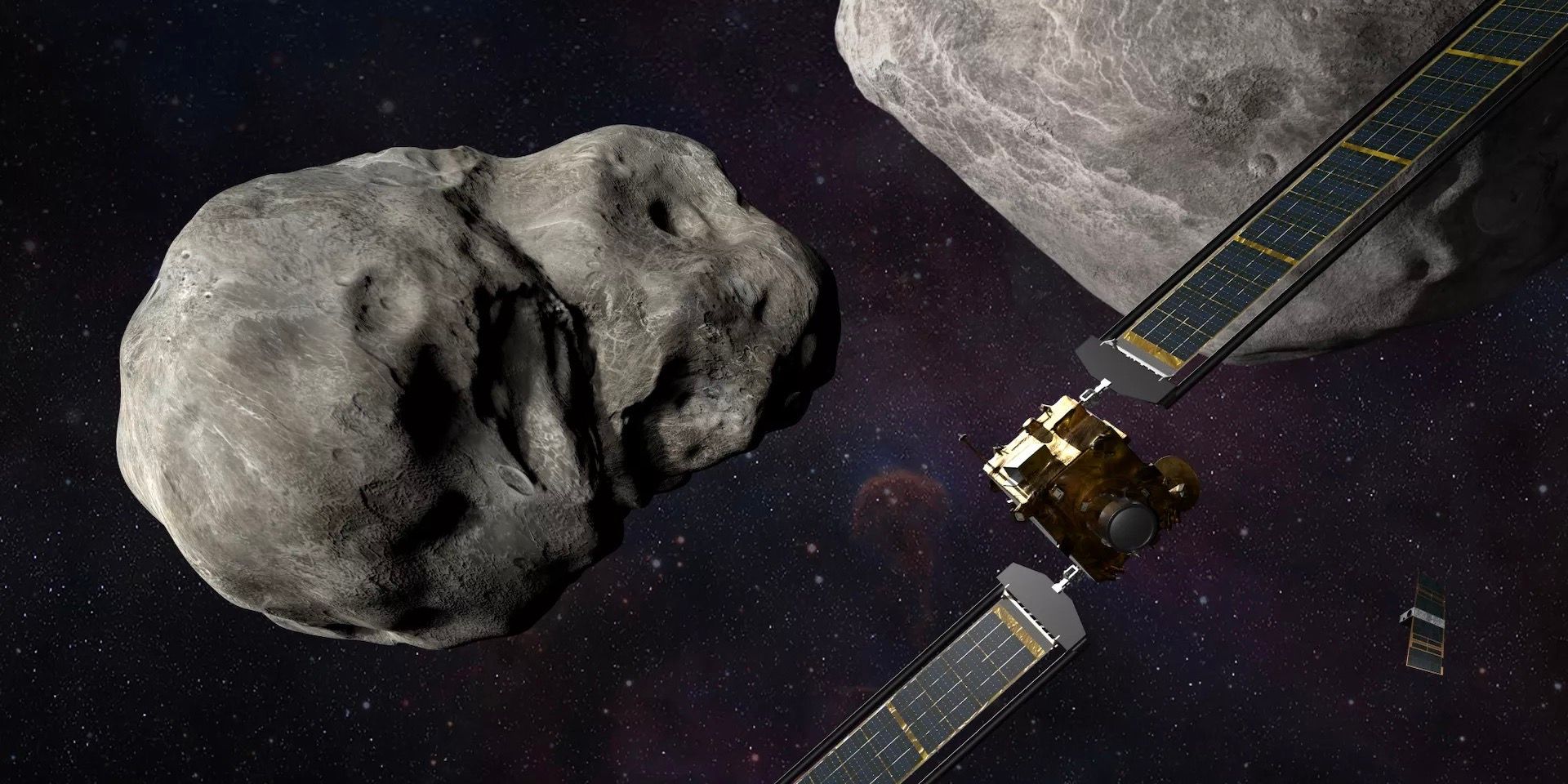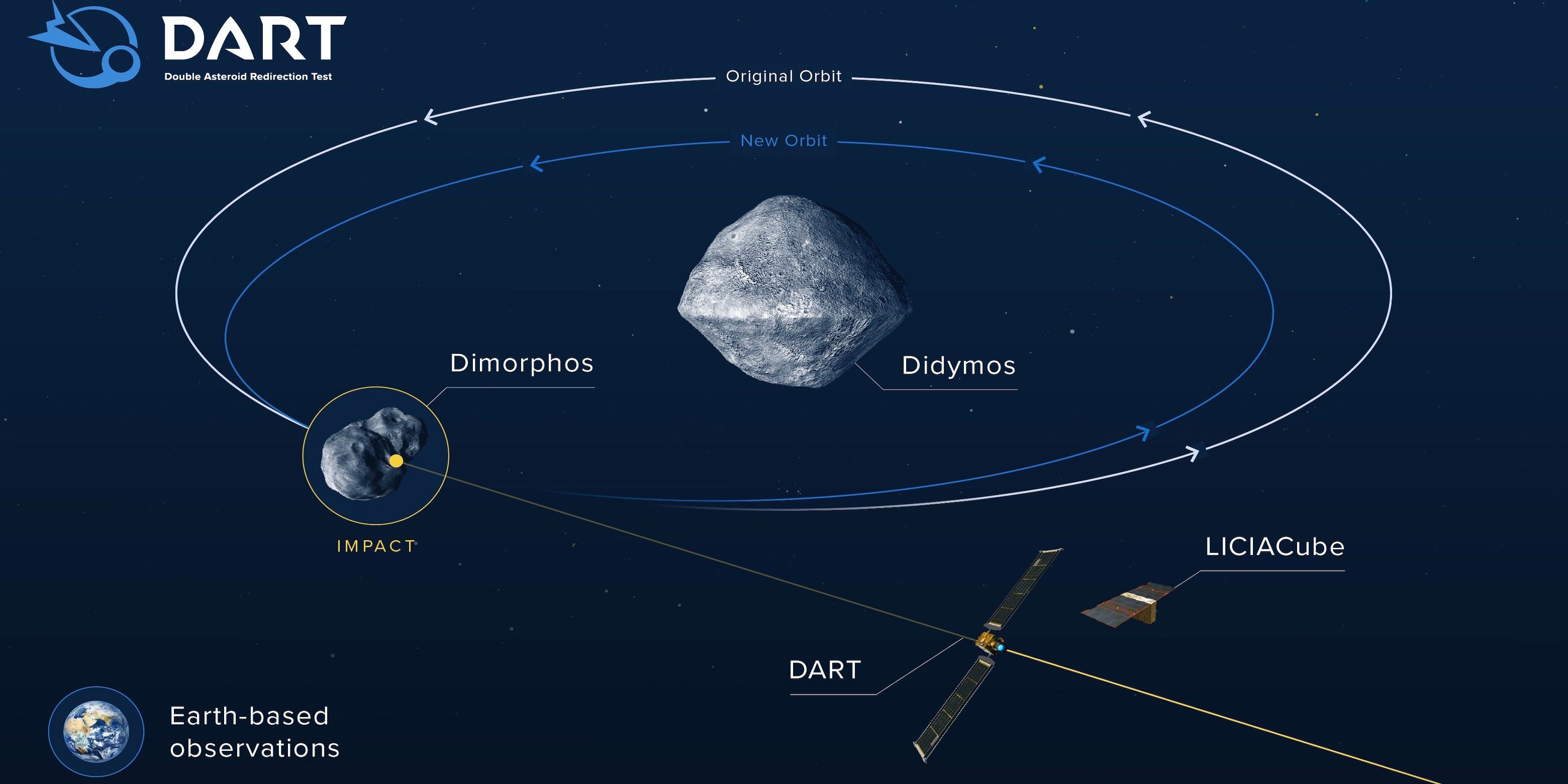In an event that promises to be more thrilling than a late ‘90s asteroid blockbuster, NASA is inviting the public to watch as it crashes a spacecraft into an asteroid. The collision is the culmination of the Double Asteroid Redirection Test (DART) mission, which aims to revolutionize planetary defense protocols.
DART launched in November 2021, and has been en route to the Didymos asteroid system ever since. The system consists of the asteroid Didymos, which is a whopping 780 meters in diameter (2,560 feet), and its moonlet, Dimorphos, which is significantly smaller at 160 meters (530 feet) across. Didymos and Dimorphos pose no immediate threat to Earth, but because the duo pass nearby they are an ideal target to test the feasibility of redirecting an asteroid’s path. The test is designed to demonstrate that a spacecraft is capable of autonomously navigating to and into an asteroid. If all goes well, experts believe they could launch a similar mission should NASA ever discover a more threatening asteroid on a collision course with Earth.
Recently, NASA announced that DART is scheduled to impact Dimorphos at 7:14 p.m. EDT on Monday, Sept. 26. Beginning at 6:00 p.m. EDT on DART impact day, live coverage of DART’s impact with Dimorphos will air on NASA TV and the agency’s website. It will also be possible to watch live on agency social media accounts on Facebook, Twitter, and YouTube. An in-person event will also be hosted from the Johns Hopkins Applied Physics Laboratory (APL) in Laurel, Maryland. APL built and manages the DART spacecraft for NASA.
A New Orbit For A New Era
While DART is designed to disintegrate on impact, the asteroid system will not explode. Instead, the hope is to simply knock the asteroid off its original trajectory. When DART collides with the moonlet Dimorphos, it will be traveling at nearly 15,000 miles per hour, which is hopefully enough momentum to force the moonlet into a tighter, slower orbit around Didymos. The event will be observed and measured both from Earth and space. A cube satellite known as the LICIACube will detach from DART ten days before impact to document the interaction, while telescopes on Earth will simultaneously measure the effects of the collision and dislodged materials, comparing them to computer simulations. In five years, the European Space Agency mission Hera plans to reconvene with Didymos to further evaluate the mission’s efficacy.
As the first mission of its kind, DART impact day is hotly anticipated. Should the mission effectively alter Dimorphos’s orbit, the threat to Earth from Near-Earth objects will be greatly diminished, and the $324.5 million dollar mission will have been a success. With computer simulations showing a broad range of possible outcomes, NASA and spectators worldwide will be watching with bated breath.
Source: NASA


